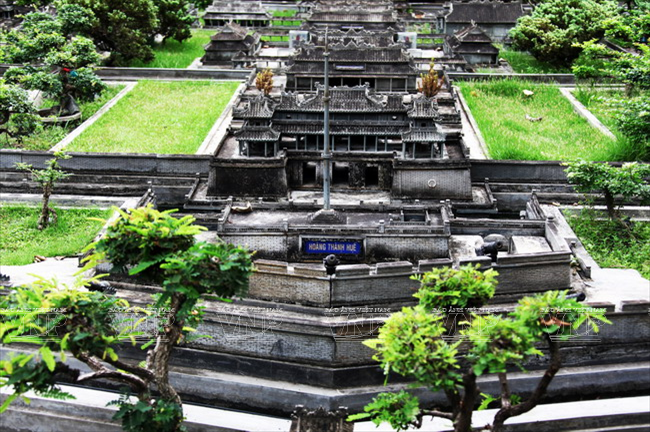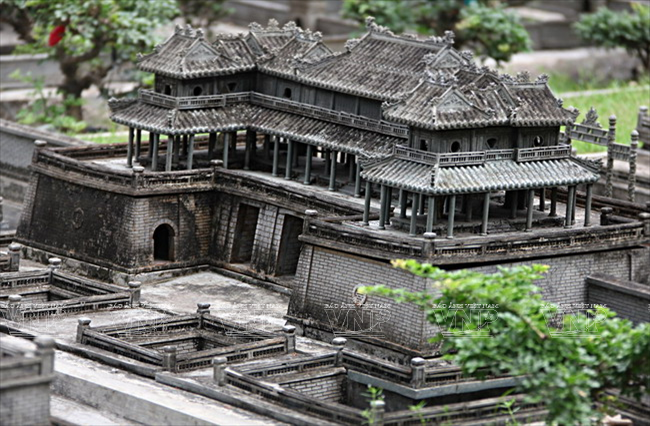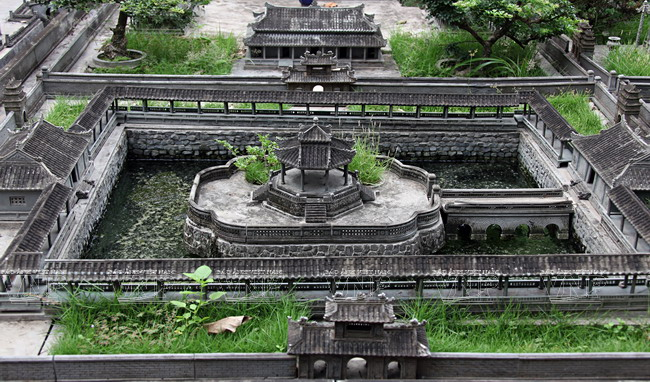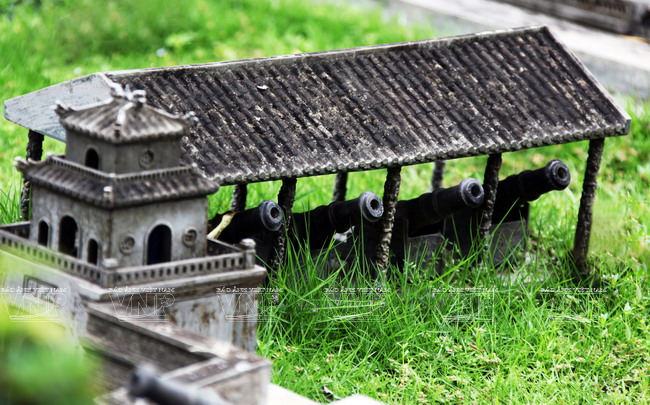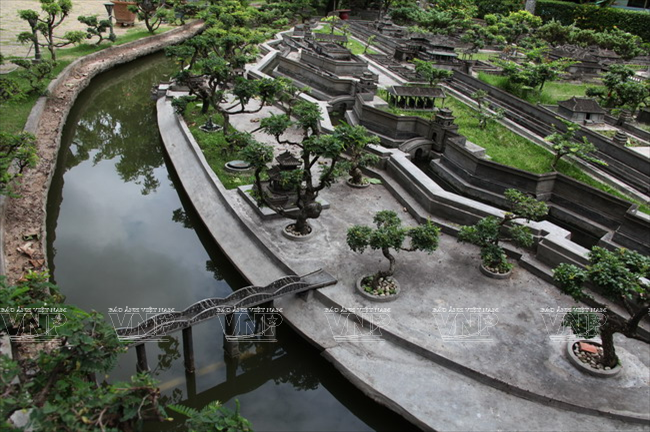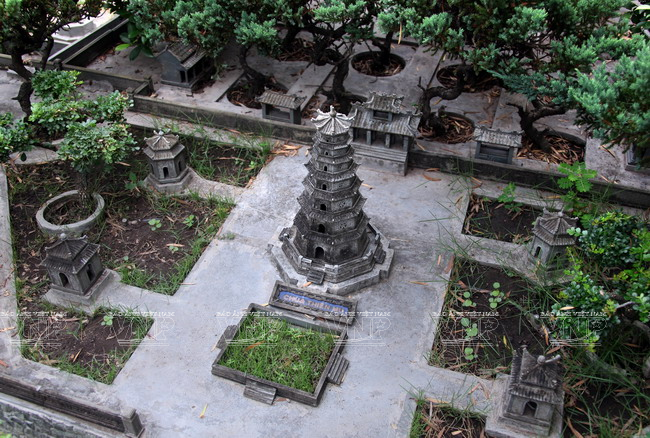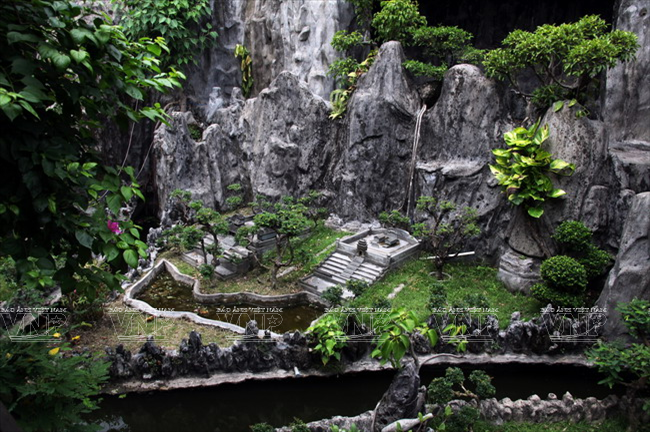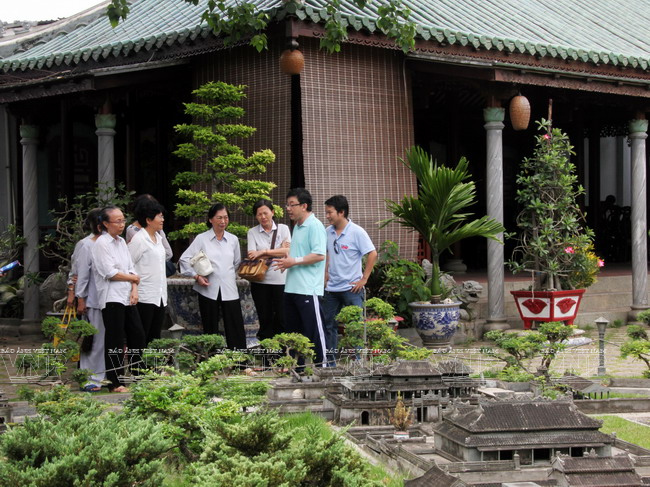Ngu Lam Vien faces southwards in the same direction as the original imperial city. The romantic Huong (Perfume) River is re-produced with Ngu Binh Mountain and the two small Hen and Da Vien islets which form a flanking dragon and prostrating tigers to defend the imperial city.
 Ngu Lam Vien replicates key constructions of the imperial capital of Hue. |
To successfully reproduce images of Hue, Tung has a vast knowledge of its cultural and historical values. He has become a perfect tour guide for visitors who want to know more about the imperial city with full explanations, from the designs on the bricks paved on the ground to the architecture of the citadels’ gates, temples and tombs.
Tung said that the citadels’ gates facing eight directions were built in a defense-attack architectural style. Ngo Mon (Noon Gate) not only works as the main entrance, but also reflects the face of Dai Noi (Inner Palace). It has five doors, nine roofs and 100 pillars representing the longevity of the royal dynasty.
Meanwhile, the Royal Citadel and the Forbidden Citadel, called Dai Noi (Inner Palace), are in charge of defending the palaces and temples, and residences of the kings and the royal families. Inside the Inner Palace, there are temples for worshipping the kings’ ancestors, all arranged in order.
Downstream the Huong River which runs through the imperial city, visitors can see magnificent works, including the Truong Tien Bridge, Van Lau Wharf , Thuong Bac Communal House, Thien Mu Pagoda and Hon Chen Temple. They very closely resemble the original ones. Many researchers of Hue’s culture said that the most value part of Ngu Lam Vien is the successful reproduction of some works that had been heavily damaged during the war time.
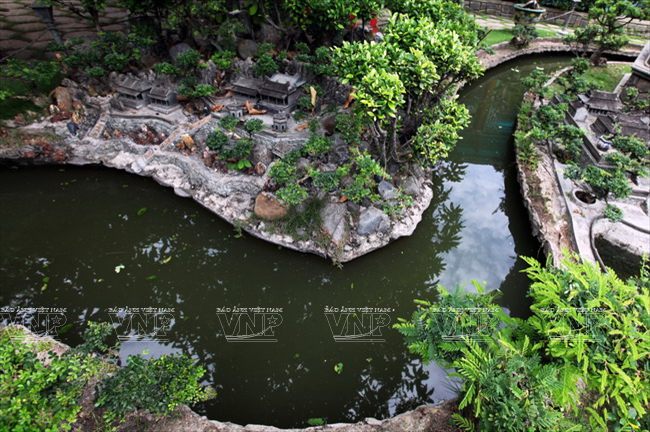 The replica of the imperial capital surrounded by the Huong River. |
“I have not yet visited Hue, but here I can learn much about the imperial city’s history, especially its unique architecture full of cultural and historical values that have spanned many centuries,” said Nguyen Minh Dang, a student from Ho Chi Minh City University of Social Sciences and Humanity.

